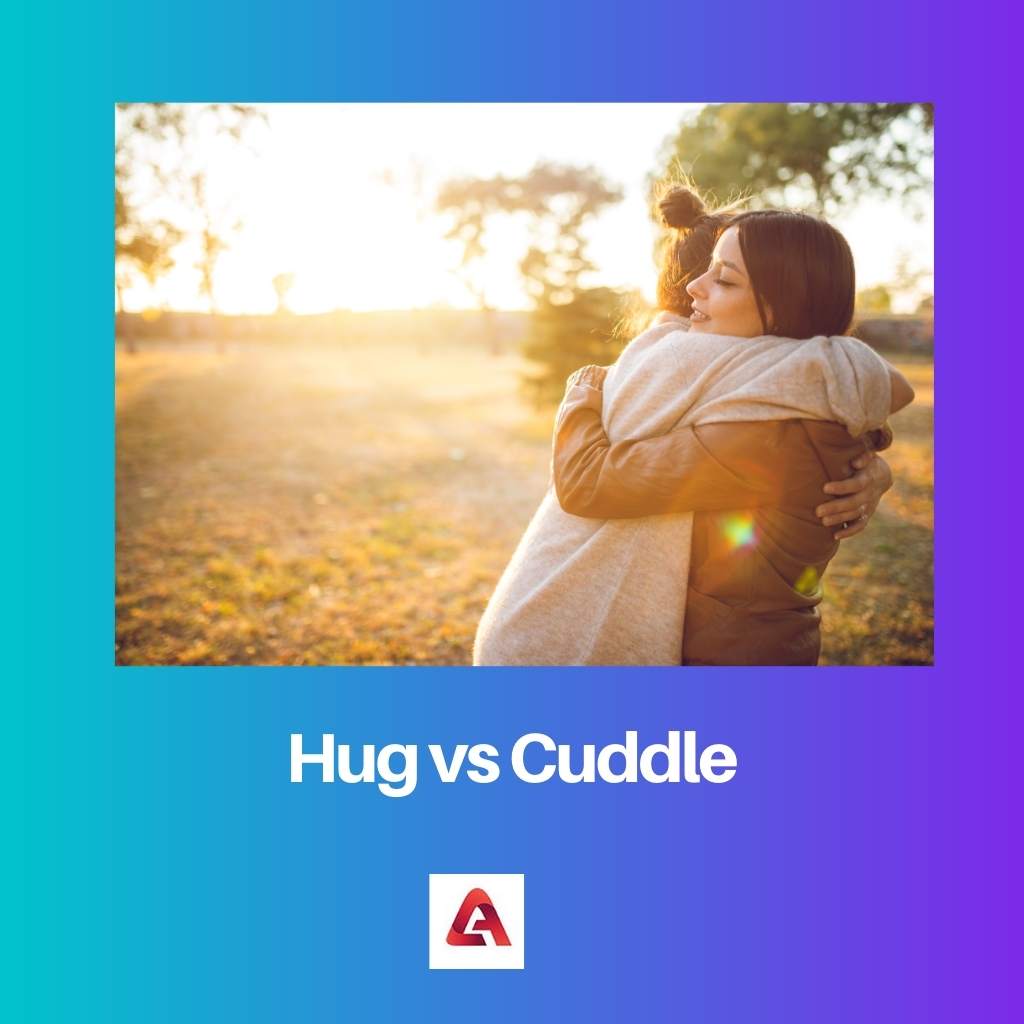Human beings are considered social animals. They stick around their close ones, make love to them, make them feel special, share happiness, support them, and stand in times of sorrow and pain.
Generally, communication between two individuals does not require many words to explain but some cute expressions, such as hugging and cuddling.
Many people think that both non-verbal communication, hugging and cuddling, are the same. But no, they have certain key differences between them as well.
Key Takeaways
- Hugging involves wrapping your arms around someone in an embrace, while cuddling involves holding someone close to your body while lying down or sitting.
- Hugging is a brief gesture of affection, while cuddling is a prolonged and intimate form of physical contact.
- Hugging can be done while standing, while cuddling requires comfortable seating or lying.
Hug vs Cuddle
The difference between a hug and a cuddle is that a hug is a mutual form of embrace between two people, which can be done as a greeting, love, and affection both personally and professionally. However, in the case of cuddling, it can be mutual or even can one-sided, where one person gives love and affection to the other person who receives it. A hug can occur between any two individuals. However, cuddling occurs between couples and close people.

Love, brotherhood, sisterhood, friendship, warmth and affection can be expressed while hugging. This act can offer comfort, support and sympathy between each other. While greeting, two individuals can hug each other and hence greet each other.
When two individuals want to hug, they both hug by in a position of standing. The level of intimacy in case the of a hug is not as high and intense as it is in the case of a cuddle. The act refers to a brief embrace between two people or can be done for a longer time between a couple.
Cuddling, the act of wrapping around each other’s body, is associated with affection and love. This act does not indicate the act of support, comfort or sympathy. The act of greeting can not be done by cuddling.
Two close individuals must sit together intimately or lie close to cuddle. This is more intimate, affectionate and even intense than the act of hugging. It refers to a long embrace between two close individuals.
Comparison Table
| Parameters of Comparison | Hug | Cuddle |
|---|---|---|
| Type of embrace | Brief embrace | Long embrace |
| Level of Intimacy | A hug is not intense. | Cuddle is more intense, intimate and affectionate. |
| Position | It can be done only while standing. | It can be done either by lying down or sitting together. |
| Expression | Love, warmth, brotherhood, sisterhood, friendship, affection can be expressed. | Mainly associated with affection and love, only. |
| Form of Greeting | Hug involves the act of greeting. | Cuddling does not involve the act of greeting. |
| Sympathy and Support | Offers comfort, support or even sympathy. | Does not offer comfort, support or sympathy. |
What is Hug?
A hug is a type of nonverbal communication that involves physical intimacy. When two people put their arms on the other person’s back, neck or waist, it is referred to as hugging.
Hug indicates familiarity, affection, love, friendship, brotherhood and sisterhood. However, hugging also indicates comfort, solidarity and even sometimes support.
It is sometimes done as an act of showing sympathy or congratulations. Some cultures include hugging as a common practice while greeting as well. But this kind of hug does not indicate affection or love. It is purely professional.
When the number of people involved is more than two while hugging, it is known as a group hug.
Hugging is done in the standing position. This act is normal for people of all age groups sharing various kinds of relationships. A mother can hug her kid, daughter, and son; two siblings can hug each other.
A grandmother can hug her grandchildren; a boyfriend can hug her girlfriend; a husband can hug her wife, children and thus so on.
However, hugs between a couple indicate love, lust, romance and sexual feelings. It can also be done as an act of acceptance as well.

What is Cuddle?
Cuddling is physical intimacy involving two people very closely wrapped around each other’s arms and bodies. Cuddling occurs between lovers and indicates a more intimate and affectionate bonding than hugging.
However, it is also associated with family members as well. Cuddling is done for a much longer period.
When two people sit together or lie down intimately, then cuddling occurs. Unlike again, cuddling cannot be found as an act of greeting or congratulation. It occurs only when two people share a very close relationship, such as a couple and a mother and her children.
Cuddling is an indication of love, trust, similarity and belief.
Cuddling is not acceptable in any public place, as it is considered taboo, and the people doing it in the public area are considered criminals. When a mother takes care of her baby, the child, for a long time till the baby falls asleep, it can be considered as cuddling between them.
Generally, when two people love or like each other immensely, they cuddle is an indication of romance, affection and love.

Main Differences Between Hug and Cuddle
- Love, warmth, brotherhood, sisterhood, friendship, and affection can be expressed via hugs. In contrast, a cuddle is associated with affection and love only.
- A hug can offer comfort, support or even sympathy. In contrast, cuddling does not indicate an act of comfort, support or sympathy.
- While greeting, two people can hug each other. However, greeting can not be done by cuddling.
- When two people want to hug, they need to be in a standing position. However, when two people lie down or sit together, cuddling occurs.
- The level of intimacy in a hug is not as intense as it is in the case of a cuddle. Cuddle is more affectionate, intimate and even intense.
- Hug refers to a brief embrace. On the other hand, a cuddle refers to a long embrace.




